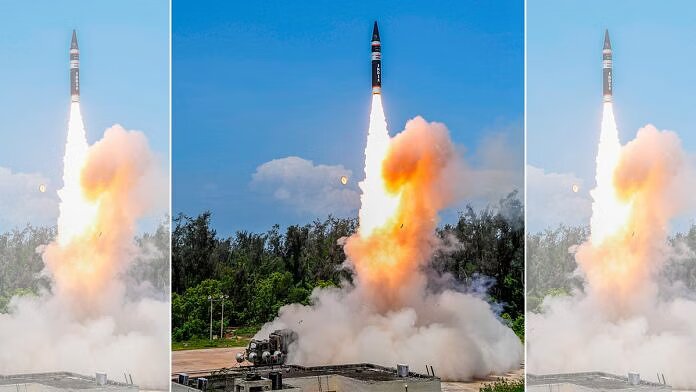Together with the Defense Research and Development Organization (DRDO), India’s Strategic Forces Command (SFC) successfully tested the Agni-Prime New Generation Ballistic Missile in the air on April 3, 2018.
Around 7 p.m. on Wednesday, the test was done from Dr. APJ Abdul Kalam Island, which is off the coast of Odisha.
In a statement, the Ministry of Defense said that the test met all of its goals, proving that it worked as expected. This was supported by data from several range sensors put in different areas, such as two downrange ships at the terminal point.
The Chief of Defence Staff, the Chief of Strategic Forces Command, and top leaders from the Indian Army and DRDO all watched the launch.
Defense Minister Rajnath Singg praised the DRDO, SFC, and the Armed Forces for the successful test. He also said that the successful development and introduction of the weapon would be a great way for the Armed Forces to increase their power.
The rocket is made up of two stages and solid fuel. The range of this advanced type of Agni rocket is between 1,000 and 2,000 km.
The whole rocket is made of composite material, which is better in many ways than regular materials. Composites are lighter than other materials, stronger, and give designers and manufacturers more options for how to create and make things.
Agni Prime comes in the form of a jar. Adding a canister to a rocket makes it much more mobile.
In the canisterized configuration, a missile doesn’t need much time to get ready and can be fired right away. Putting missiles in canisters also makes them more reliable and extends their shelf life.
In this setup, a missile with a nuclear warhead is sealed in a canister that is put on top of a mobile launcher that can be driven on the road.
